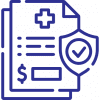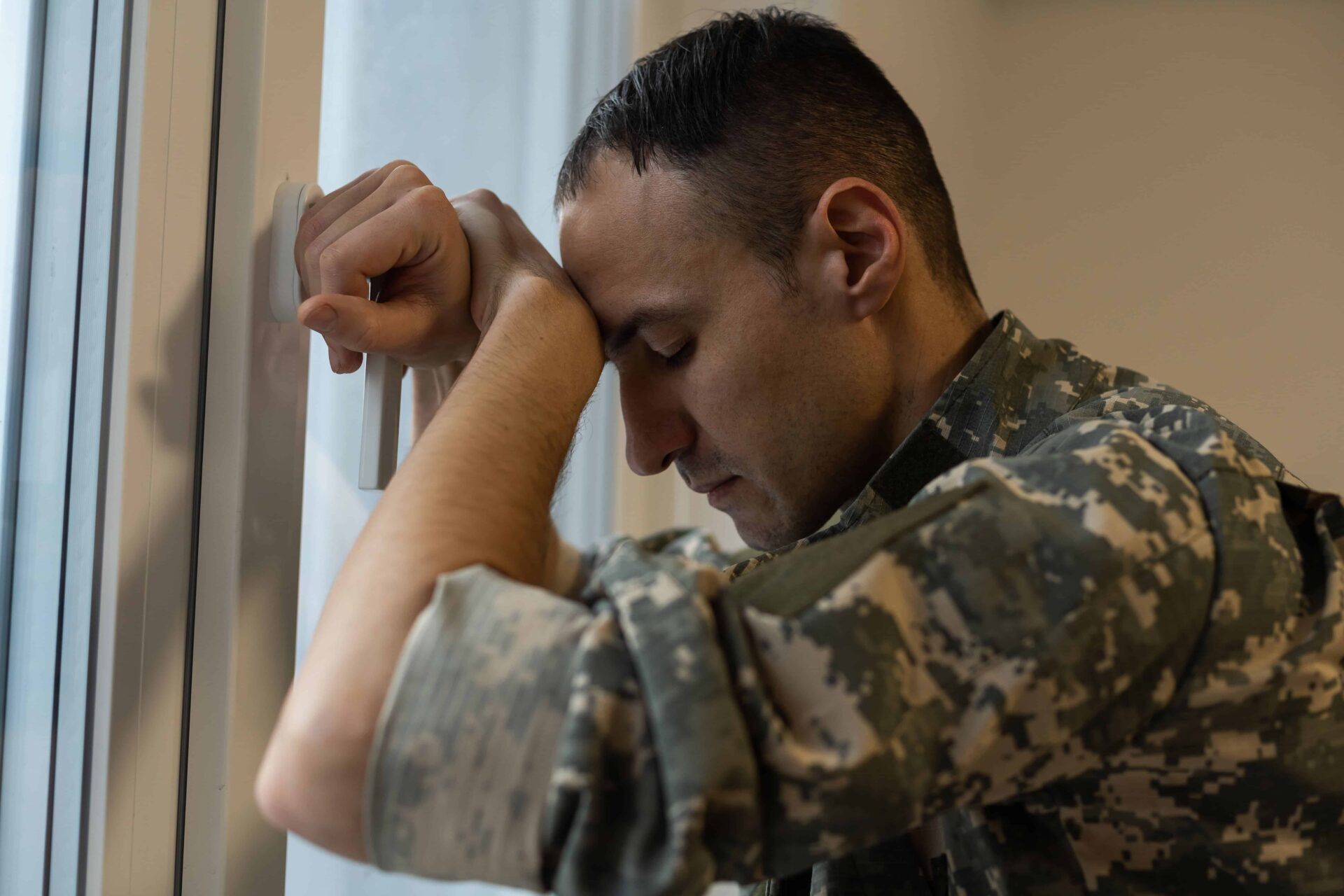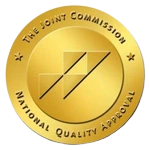Opioid Addiction Treatment in Murfreesboro, TN
The opioid epidemic continues to have a devastating impact across the United States, and our own communities in Tennessee have felt its effects deeply.
Every year, thousands of lives are lost to opioid overdose, and countless families are torn apart by addiction to powerful drugs like prescription painkillers, heroin, and fentanyl.
In cities like Murfreesboro, Nashville, and surrounding areas, the need for compassionate, effective opioid addiction treatment has never been greater.
At Tulip Hill Recovery, we understand the complex nature of opioid addiction and the critical importance of timely, professional intervention.
Our opioid addiction treatment center in Murfreesboro, TN, helps individuals and families heal from the physical, emotional, and psychological wounds of addiction.
Through medical detox, therapy, and holistic support, we guide each client toward sustainable recovery.
If you or a loved one is seeking a trusted rehab for opioid addiction, know that recovery is possible — and it starts here, with personalized care and unwavering support at Tulip Hill Recovery.

What Are Opioids?
Opioids are drugs that include both legal prescription medications and illegal substances. Medically, opioids are prescribed to relieve moderate to severe pain, often after surgeries, injuries, or in cases of chronic conditions like cancer.
Common prescription opioids include oxycodone (OxyContin), hydrocodone (Vicodin), morphine, and codeine.
In addition to these, illegal drugs such as heroin and powerful synthetic opioids like fentanyl also fall into the opioid category.
Opiates refer specifically to naturally occurring opioids derived from the opium poppy, like morphine and codeine, while the term opioids covers all drugs — natural, synthetic, and semi-synthetic — that act on opioid receptors in the brain.
Are Opioids Addictive?
When a person uses opioids, the drugs bind to specific receptors in the brain and also throughout the nervous system, blocking pain signals and releasing large amounts of dopamine.
This creates feelings of intense euphoria, relaxation, and pleasure.
However, with repeated use, the brain’s natural dopamine production decreases, making it harder for individuals to feel good without the drug.
This cycle of pleasure and withdrawal makes opioids highly addictive and dangerous, especially when misused.
Whether the addiction stems from prescription medications or illegal substances like heroin or fentanyl, the effects on the body and mind can be devastating without professional help.
To learn more about the dangers of misusing prescription medications, visit our guide on Prescription Drug Addiction.
At Tulip Hill Recovery, our opioid addiction treatment in Murfreesboro, TN, addresses every aspect of this powerful disease, helping individuals heal physically, mentally, and emotionally.
Risk Factors for Opioid Addiction
Opioid addiction rarely begins with the intention to misuse drugs.
For many people, it starts with a legitimate prescription for pain relief after surgery, injury, or a chronic health condition. However, because opioids flood the brain with dopamine and create intense feelings of pleasure and calm, even prescribed use can quickly lead to dependency if not carefully managed.
When someone uses opioids repeatedly, the brain adapts by reducing its natural production of dopamine.
Over time, the body will start to need higher doses to achieve the same effect — a phenomenon known as tolerance.
As tolerance builds, individuals may begin taking more opioids than prescribed, using them more frequently, or seeking stronger drugs like heroin or illicit fentanyl. This escalating pattern is often the first step toward opioid addiction.
Several factors increase a person’s chances of developing an opioid use disorder:
Genetics: A family history of substance misuse can make individuals more vulnerable to addiction.
Trauma: Experiences like physical, emotional, or sexual abuse, especially during childhood, can lead individuals to self-medicate emotional pain with opioids.
Mental Health Disorders: Conditions like anxiety, depression, PTSD, and ADHD are closely linked to a higher risk of opioid misuse.
Overprescription: Receiving high doses of opioids for extended periods, even under medical supervision, significantly raises the risk of dependence and opioid abuse.
Once dependence takes hold, opioid addiction becomes a chronic, relapsing disease that requires professional intervention to overcome.
At Tulip Hill Recovery, our opioid addiction treatment in Murfreesboro, TN, is designed to break this cycle and help individuals rebuild their lives with lasting support and care.
Signs and Symptoms of Opioid Addiction
Recognizing the signs of opioid addiction early on can make a critical difference in getting the right help.
Addiction often affects every aspect of a person’s life — emotionally, physically, and socially — and these changes usually become more obvious over time.
-
Physical Signs
One of the risks of long-term opioid use is respiratory depression.
Opioids slow breathing by acting on brain centers that control respiration. In cases of overdose, breathing can slow dangerously or stop altogether, leading to brain damage, coma, or death.
Other physical consequences of prolonged opioid abuse include:
- Chronic constipation and gastrointestinal issues
- Liver and kidney damage due to the body’s ongoing effort to filter toxins
- Increased risk of infectious diseases, including HIV and hepatitis (especially if opioids are injected)
- Hormonal imbalances leading to problems like infertility
- Noticeable weight loss and changes in appetite
- Constricted (pinpoint) pupils
- Frequent drowsiness or falling asleep at inappropriate times
- Poor hygiene and changes in physical appearance
- Slurred speech and impaired coordination
The risk of overdose becomes even higher when opioids are combined with other substances like benzodiazepines, alcohol, or other depressants.
To learn more about these heightened dangers, visit our resource on Combining Opioids and Alcohol: Dangers and Risks.
-
Behavioral Signs
The emotional toll of opioid abuse can be just as devastating as the physical effects:
- Depression, anxiety, and mood instability often worsen with prolonged use.
- Cognitive decline can impair memory, decision-making, and the ability to focus.
- Social isolation becomes common as relationships are strained or lost.
- Financial hardship and legal issues often follow, especially if opioid use leads to job loss, criminal activity, or mounting debt.
- Doctor shopping to obtain multiple prescriptions
- Stealing or borrowing medications from others
- Neglecting responsibilities at work, school, or home
- Risky behaviors like driving under the influence
- Secrecy and isolation to hide substance use
Ultimately, opioid addiction often leaves individuals feeling trapped — physically dependent, emotionally broken, and isolated from the support systems they need most.
-
Emotional and Cognitive Warning Signs
- Mood swings ranging from euphoria to irritability or depression
- Anxiety and paranoia when opioids are not available
- Loss of motivation and declining interest in activities once enjoyed
- Increased irritability and defensive behavior when confronted
-
Social and Financial Impact
As opioid addiction worsens, its impact spreads to every part of life.
Personal relationships often suffer, with family members and friends noticing the individual becoming distant, dishonest, or unreliable.
Job performance declines, financial troubles emerge, and health deteriorates, often pushing individuals into deeper isolation and desperation.
-
Co-Occurring Disorders
Many individuals battling opioid addiction also experience underlying mental health conditions, which can intensify the cycle of substance use.
If you suspect co-occurring disorders are involved, it’s important to seek specialized care.
Discover how we address both addiction and mental health at our Dual Diagnosis Treatment Centers in Murfreesboro, TN.
At Tulip Hill Recovery, our opioid addiction treatment in Murfreesboro, TN, is designed to address all of these issues with comprehensive, compassionate care, helping individuals rebuild their health, their relationships, and their future.
At Tulip Hill Recovery, our compassionate team understands how complex opioid addiction can be — and we’re here to provide the personalized care needed for true, lasting recovery.
Timeline and Stages of Opioid Withdrawal
Withdrawal from methamphetamine can be one of the most challenging stages of recovery.
Once meth use stops, the brain struggles to adjust to the absence of the intense dopamine surges it had become dependent on.
This crash often leads to powerful physical, emotional, and psychological symptoms, making withdrawal from methamphetamine treatment a critical step that requires medical support.
While the exact withdrawal timeline can vary depending on the specific opioid used, the length of use, and the individual’s overall health, a general pattern often looks like this:-
First 24–48 hours:
Early symptoms begin, especially for short-acting opioids like heroin.
-
Days 3–10:
Symptoms will peak. Intense cravings, nausea, vomiting, diarrhea, abdominal cramping, and chills are common.
-
Weeks 2–4:
Physical symptoms gradually begin to subside, although emotional symptoms often remain strong.
-
After One Month
Lingering symptoms like depression, anxiety, irritability, and sleep disturbances can persist without proper treatment and support.
-
Symptoms of Opioid Withdrawal
- Severe cravings for opioids
- Muscle aches and body pain
- Nausea, vomiting, and diarrhea
- Anxiety and agitation
- Insomnia and sleep disturbances
- Sweating, chills, and goosebumps
- Increased heart rate and blood pressure
- Depression and emotional volatility
Although opioid withdrawal is rarely life-threatening on its own, it can be extremely uncomfortable and dangerous because of the high risk of relapse.
Many individuals return to opioid use just to escape the intense withdrawal symptoms — a cycle that can quickly lead to overdose, especially if tolerance has decreased.
For a broader look at how quickly dependence on substances can develop, you can explore our related article: How Long Does It Take to Get Addicted to Alcohol?.

The Importance of Opioid Detox and Rehab
Supervised detox is the safest and most effective way to manage opioid withdrawal.
At Tulip Hill Recovery, we offer medically supervised detox services as part of our opioid addiction treatment in Murfreesboro, TN, ensuring that clients are safe, supported, and given relief from the worst of their symptoms.
Medical supervision can also address dehydration, heart issues, mental health crises, and other complications that may arise during the withdrawal process.
With the right care, it’s possible to get through withdrawal safely and move forward into lasting recovery.
Levels of Care + Dual Diagnosis and Co-Occurring Disorders
At Tulip Hill Recovery, we believe that every individual deserves a personalized path to healing.
That’s why our opioid addiction treatment in Murfreesboro, TN, offers a full continuum of care — from medical detox through outpatient support — tailored to meet each client’s unique needs.
Our programs address not just the physical dependence, but the emotional, behavioral, and mental health aspects of opioid addiction recovery.
Drug Detox
The first critical step in treating opioid addiction is completing a detox for opioid addiction under medical supervision.
Withdrawal symptoms can be severe and even dangerous without the right support.
A structured, medically managed detox program helps individuals safely clear opioids from their system while minimizing discomfort and health risks.
Our opioid detox services include:
- 24/7 medical monitoring
- Symptom management with or without the use of Medication-Assisted Treatment (MAT)
- Emotional support to reduce anxiety and depression during withdrawal
- Preparation for entry into the next level of treatment
- Detox alone isn’t enough to sustain long-term recovery, but it lays the foundation for the healing process to begin.
Learn more about the additional addiction services we offer by visiting our page on Drug Addiction Treatment in Murfreesboro, TN.
Partial Hospitalization Program (PHP)
After completing detox, many clients move into our Partial Hospitalization Program (PHP) for intensive day treatment.
PHP is ideal for post-detox stabilization and provides:
- Structured therapy sessions five days a week
- Daily individual and group counseling
- Psychiatric care and medication management
- Life skills training and relapse prevention planning
This level of care allows clients to focus fully on their treatment for opioid addiction while still returning home or to a sober living environment at night.
PHP strengthens emotional regulation, builds resilience, and provides critical tools for maintaining opioid addiction recovery.
Intensive Outpatient Program (IOP)
Once clients have stabilized through PHP, many transition into our Intensive Outpatient Program (IOP) to continue progress while reintegrating into everyday life.
IOP provides:
- Therapy three to five days per week for a few hours each day
- Flexibility to work, attend school, or care for family
- Ongoing relapse prevention and peer support
Balancing recovery with daily responsibilities is a critical milestone on the journey to independent, sustained sobriety.
Addiction Treatment Aftercare
Recovery is a journey that continues long after leaving rehab for opioid addiction. The transition back to everyday life can be challenging, and ongoing support is crucial for maintaining sobriety. That’s why we offer comprehensive aftercare services to help individuals navigate this critical phase of their recovery.
Our aftercare program includes:
- Regular follow-up sessions
- Continued therapy as needed
- Access to support groups and alumni programs
- Assistance with employment, housing, and education when needed
- Relapse prevention planning and skills
This ongoing support helps reinforce the tools and strategies learned during opiate addiction treatment, giving individuals the best chance at maintaining their sobriety in the long run.
Individual, Group, and Family Therapy
Therapy is at the heart of lasting recovery at Tulip Hill Recovery. We offer:
Individual Therapy: Personalized sessions to uncover underlying issues, triggers, and emotional patterns.
Group Therapy: Building community, sharing experiences, and learning from others on the same journey.
Family Therapy: Healing broken relationships, improving communication, and strengthening the family support system.
Topics covered include:
- Coping strategies for cravings and stress
- Emotional regulation techniques
- Building healthy relationships and boundaries
- Planning for relapse prevention and future challenges
Holistic Therapies for Opioid Addiction
We believe in treating the whole person, not just the addiction. Our holistic therapies complement traditional treatments by promoting physical, emotional, and spiritual healing:
Mindfulness and Meditation: Training the mind to stay present and manage anxiety.
Yoga and Movement Therapy: Reconnecting with the body and releasing built-up stress.
Art Therapy: Expressing emotions in a creative, healing way.
Equine Therapy: Developing trust, communication skills, and self-esteem through working with horses.
By addressing every layer of recovery — mind, body, and spirit — we help our clients build a stronger, healthier foundation for lasting sobriety.
Dual Diagnosis Treatment
As a leading dual diagnosis treatment center in Tennessee, we specialize in integrated care that treats the whole person, not just the symptoms.
Whether you’re dealing with depression and alcohol use, PTSD and benzodiazepine dependence, or another combination, we’re here to support you.
Our approach to dual diagnosis treatment is grounded in compassion, science, and personal experience.
We provide a safe space to uncover what’s really driving addiction, and we help our clients build the tools they need to recover from both.
What is Medication-Assisted Treatment (MAT) for Opioid Addiction
Medication-Assisted Treatment (MAT) is one of the most effective and evidence-based approaches to opioid addiction treatment.
It combines FDA-approved medications with counseling and behavioral therapy to treat the whole person, not just the addiction.
MAT helps stabilize individuals during detox, manage withdrawal symptoms, reduce cravings, and create a smoother path toward long-term recovery.
How MAT Helps During Detox and Early Recovery
Withdrawal from opioid dependence can be physically and emotionally overwhelming. MAT provides critical support during this vulnerable phase by:
- Easing withdrawal symptoms such as cravings, pain, nausea, and anxiety
- Reducing the risk of relapse, especially during the early weeks of sobriety
- Restoring chemical balance in the brain, helping individuals feel more stable and focused
- Letting clients engage more fully in therapy and recovery work without the distraction of intense physical symptoms
By reducing the discomfort of cravings and withdrawal, MAT gives individuals the foundation they need to rebuild their lives safely and sustainably.
Common Medications Used in MAT for Opioid Addiction
- Suboxone (buprenorphine and naloxone): Buprenorphine partially activates opioid receptors, reducing cravings without producing the full high associated with opioids. Naloxone discourages misuse.
- Methadone: A long-acting opioid agonist that lessens cravings and symptoms of withdrawal by occupying the same receptors in the brain but without the intense euphoria of drugs like heroin or fentanyl.
- Naltrexone (Vivitrol): An opioid antagonist that works to block the effects of opioids entirely, helping prevent relapse after detox is complete.
Each medication is carefully chosen based on a client’s specific needs, substance use history, and recovery goals, and is always combined with therapy and holistic care for maximum effectiveness.
Debunking Myths About MAT
Despite its success, there are still many myths about MAT, including the idea that it “just replaces one drug with another.” This is simply not true.
When used properly under medical supervision, MAT:
- Supports recovery rather than sustaining addiction
- Stabilizes brain chemistry disrupted by long-term opioid abuse
- Helps people regain control of their lives, relationships, and goals
MAT is not a shortcut or a crutch — it’s a powerful, life-saving tool that many individuals need as part of their opioid addiction treatments.
At Tulip Hill Recovery, our comprehensive opioid addiction treatment in Murfreesboro, TN, includes MAT as an option for those who can benefit from it. Our goal is to meet each client where they are and provide the medical and emotional support necessary for lasting recovery from opioid addiction.
If you’re searching for compassionate, effective opioid addiction treatment, we are here to help you every step of the way.
Related Blog Resources
At Tulip Hill Recovery, we believe that education is a powerful tool in recovery. To help you better understand the effects of drug addiction and the path to healing, we’ve created several in-depth resources you can explore:
Start Opioid Rehab today at Tulip Hill Recovery
If you or a loved one is struggling with opioid addiction, you don’t have to face it alone. At Tulip Hill Recovery, we provide trusted, effective opioid addiction treatment in Murfreesboro, TN, offering a full range of programs to meet individuals at every stage of the recovery process. Whether you need medically supervised detox, a structured opioid rehab program, or long-term support for dual diagnosis needs, we’re here to guide you.
Our personalized treatment plans, holistic therapies, and family-centered care ensure that healing happens not just physically, but emotionally and mentally as well. Hope, healing, and a fresh start are possible.
Take the first step today with Tulip Hill Recovery — your trusted resource for treatment options for opioid addiction in Murfreesboro and beyond.
Frequently Asked Questions — Opioid Addiction & Rehab
Opioids are a broad class of drugs that include both legal prescription medications (like oxycodone, hydrocodone, morphine, and codeine) and illegal or illicit substances (such as heroin and illicit fentanyl). They work by binding to specific receptors in the brain and nervous system to reduce pain and produce feelings of euphoria and relaxation.
The term “opiates” generally refers to natural opioids derived from the opium poppy (e.g., morphine, codeine), while “opioids” includes those plus synthetic and semi-synthetic drugs.
Opioid addiction often begins with a legitimate prescription — for example, for surgery, injury, or chronic pain. Repeated use causes the brain to adapt, reducing its natural dopamine production and making it more difficult to feel pleasure or normal functioning without the drug. Over time, this can lead to tolerance (needing more to get the same effect), dependence, cravings, and compulsive use even when opioids are no longer needed medically.
Some common signs include: taking opioids for longer or in higher doses than prescribed; doctor-shopping to obtain more prescriptions; using opioids recreationally or in ways not prescribed (snorting, injecting); experiencing withdrawal symptoms when not using; persistent cravings; neglecting responsibilities at work, school, or home; financial or legal problems; and hiding or “stashing” opioid supply.
Behavioral changes — such as withdrawing from friends or family, neglecting hobbies or obligations, mood swings, or risky behavior — are also common red flags.
Tulip Hill Recovery provides a full continuum of care — from medically supervised detox to therapy, holistic care, and long-term recovery support.
Treatment may include: behavioral therapy (individual and group), relapse prevention, coping skills training, trauma-informed therapy, family therapy, mindfulness or yoga, psychoeducation, nutrition support, and aftercare planning.
They also recognize that addiction is often tied to underlying mental health issues, which is why their programs can integrate mental health treatment with substance use recovery (dual-diagnosis approach).
Yes. Evidence-based treatment for opioid use disorder often includes medications that help normalize brain chemistry, reduce cravings, and prevent withdrawal — significantly increasing the chance of successful recovery.
Common medications include (depending on the individual’s needs) options like buprenorphine or methadone — though the exact offerings depend on clinical assessment and program specifics.
Treatment length depends on individual needs — including the severity of the addiction, any co-occurring mental health issues, and how much support a person has. Recovery is often a process, not a single event.
If medications are used as part of treatment, it’s generally recommended to stay in the program long enough for the brain to heal — often a year or more.
Behavioral therapy and aftercare — including relapse prevention and support groups — are also critical for long-term success.
Yes. According to health experts, recovery is possible — especially when treatment combines medication (if needed), behavioral therapy, support, and long-term follow-up.
Addiction is a chronic condition, but with professional help, support systems, and ongoing care, individuals can regain stability in their health, relationships, and daily life.
Start Your Journey to Healing Today

Call or message us

Free assessment

Insurance check

Choose a start date
 |
Medically Reviewed By:
Board-Certified Psychiatrist and Addictionologist
|
 |
Clinically Reviewed By:
Board Certified Clinical Social Worker
|
Our Verifications & Affiliations
Yes, Your Insurance Covers Detox and Rehab Treatment.
Get Family Support Now
Supporting Families Through Recovery
We understand addiction affects the whole family. Our comprehensive family program helps rebuild trust and restore relationships.
Weekly Family Therapy Sessions
Educational Workshops
Support Groups
Communication Skills Training
















